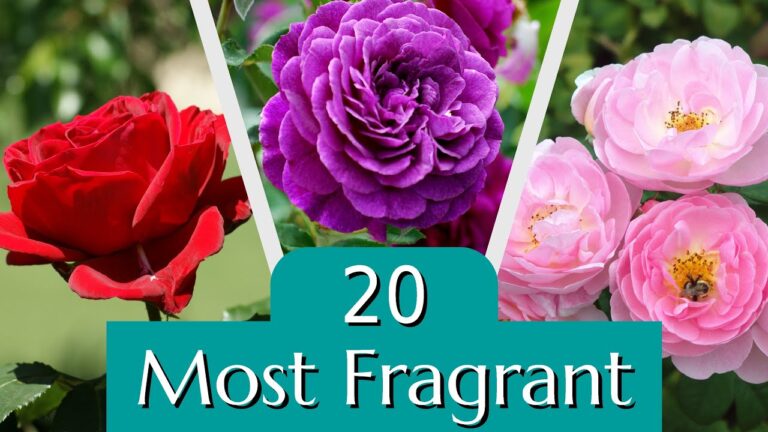Plant propagation enthusiasts often debate whether rooting in water or soil is the better method. Jason from Fraser Valley Rose Farm took this question to task by conducting a hands-on experiment to compare the two techniques. Using a range of plants, he explored the viability of rooting in water versus potting soil under controlled conditions. Here’s what he discovered and how you can apply these insights to your own propagation efforts.
The Experiment: Method and Approach
Jason’s experiment included a variety of plants: roses, figs, blackberries, hydrangeas, and a houseplant (pothos). He divided the cuttings into two groups: one placed in water and the other in potting soil. Both groups were kept under consistent indoor conditions with controlled light and temperature. Over several weeks, Jason monitored root and shoot development, leaf retention, and overall plant health.
One key observation early on was the challenge of maintaining clean water. Despite changing the water two to three times a week, algae quickly developed, creating a messy and less appealing environment compared to the soil-based cuttings.
Initial Observations: Water vs. Soil
In the first two weeks, some trends began to emerge:
- Leaf Retention: Many cuttings propagated in water retained their leaves longer compared to those in soil. However, leaf loss in soil-based cuttings didn’t necessarily indicate failure. This early advantage for water propagation often faded as the cuttings developed further.
- Callusing and Rooting: Some cuttings in water began to form calluses (a precursor to root development), particularly figs. However, actual root growth was slow or nonexistent in most cases, hinting at the limitations of water propagation for certain plant types.
Jason noted that while water propagation seemed initially promising for a few plants, potting soil provided more stable and consistent results.
Plant-by-Plant Results
Roses
For varieties like Rosa eglanteria and Ferdy, the results were mixed:
- Water: Minimal callusing, no significant rooting, and delayed progress.
- Soil: Slower initial growth but eventual strong root development, with one cutting forming an extensive root system.
Soil propagation emerged as the clear winner for roses, with soil-grown cuttings showing robust root systems and better transplant readiness.
Figs
Figs initially seemed to favor water, forming calluses on nodes submerged in water. However:
- Water: Callusing stalled, and no roots developed.
- Soil: Despite early leaf loss, figs in soil developed strong, healthy roots and quickly became viable plants.
Once again, soil proved to be the more reliable medium for this plant type, with consistently better results.
Blackberries
Blackberries failed in both conditions. Jason attributed this to the softness of the cuttings, which were likely taken at an unsuitable stage for propagation.
Hydrangeas
Hydrangeas provided one of the clearest comparisons:
- Water: Minimal rootlets formed near the stem’s top but no substantial development.
- Soil: Strong rooting and excellent growth, with roots extending to the sides of the pot.
The soil-based method outperformed water propagation for hydrangeas, offering faster and more reliable root establishment.
Pothos
As a tropical houseplant, pothos is reputed to root well in water. Jason started this trial late in the experiment, so results were inconclusive. However, pothos remains a common choice for water propagation enthusiasts due to its ease and reliability.
Challenges of Water Propagation
Jason highlighted several drawbacks of water propagation:
- Algae Growth: Despite regular water changes, algae accumulated quickly, making maintenance labor-intensive and less appealing.
- Root Fragility: Roots developed in water are structurally different from those grown in soil. Transitioning water-rooted plants to soil often causes stress, with roots prone to dieback.
- Inconsistent Results: While water may work well for certain tropical or houseplants, it was less effective for the outdoor plants Jason tested.
These challenges underline why water propagation may not always be the best choice, especially for gardeners seeking reliable outcomes.
Key Takeaways for Gardeners
When to Use Soil Propagation
- Soil provides a stable environment for root development and is better suited for woody plants like roses, figs, and hydrangeas.
- Roots grown in soil adapt naturally to their medium, reducing transplant shock and improving plant survival rates.
When to Try Water Propagation
- Water propagation works well for tropical houseplants such as pothos, philodendron, or spider plants. These plants often develop roots faster in water and can handle the transition to soil with minimal stress.
- It’s also a great method for experimental propagation or for gardeners who prefer a low-cost, visually engaging approach.
Final Verdict: Soil Takes the Lead
Jason’s experiment demonstrated that potting soil offers distinct advantages over water propagation for the plants he tested. Soil-grown cuttings rooted faster, developed stronger root systems, and required less maintenance. While water propagation had its moments—especially for retaining leaves early on—it fell short in delivering viable, transplant-ready plants.
For gardeners looking to propagate effectively, soil remains the more reliable choice for a wide range of plants. However, if you’re working with tropical houseplants or experimenting for fun, water propagation can still be a rewarding process.





